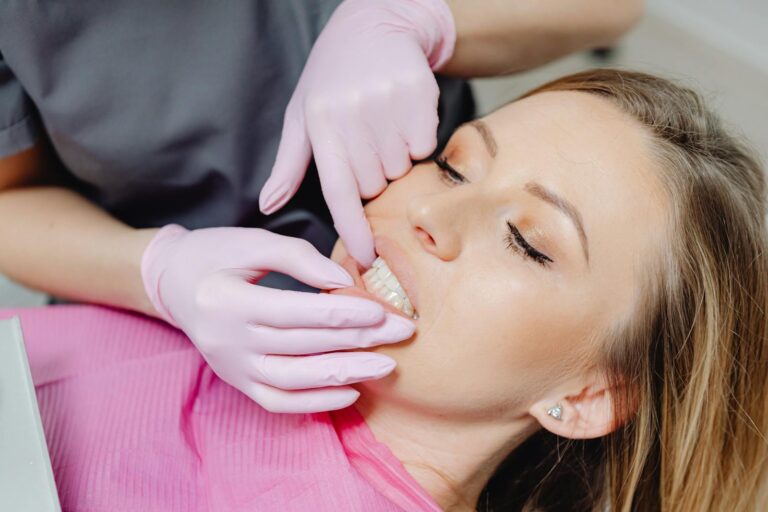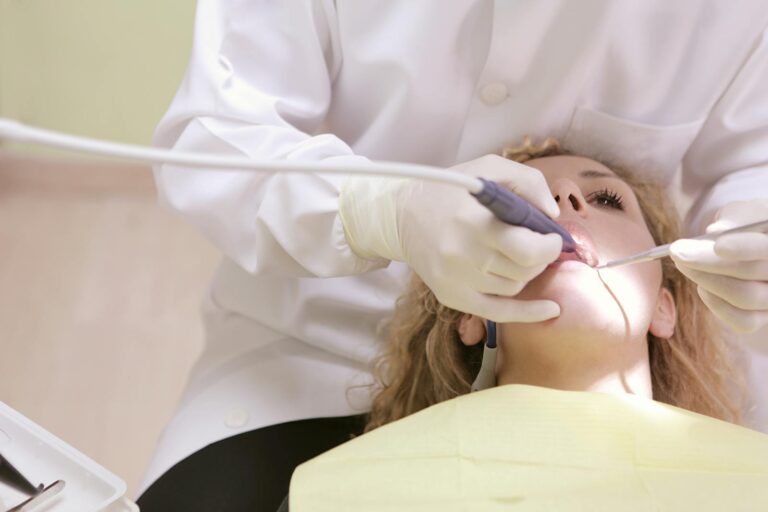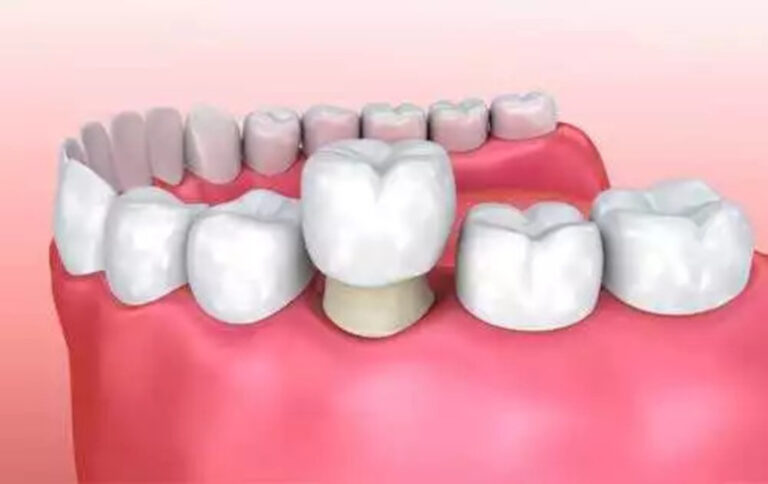Why Are My Gums Bleeding and How Can I Stop It? (Dentist’s Guide)
Bleeding gums may seem like a minor issue, but they often signal an underlying dental problem that should not be ignored. As a dentist, I often hear patients say, “My gums bleed when I brush—is that normal?” The answer is no. Healthy gums should never bleed.
🟢 Quick Tip: If you’re looking for trusted dentist-approved products to help stop gum bleeding at home, jump to the recommended products section.
In this guide, we’ll explore the main causes of gum bleeding, explain how to stop it, and recommend the best tools and products to improve your gum health—based on clinical experience and evidence-based dentistry.
What Causes Gum Bleeding?
Bleeding gums can be triggered by a variety of factors. The most common include:
1. Plaque Buildup & Poor Oral Hygiene
Plaque that’s not removed regularly irritates the gumline, leading to gingivitis—an early form of gum disease. One of the first signs is bleeding when brushing or flossing.
2. Brushing Too Hard or Using the Wrong Toothbrush
Using a hard-bristled brush or applying excessive pressure can cause microtears in gum tissue.
3. Gum Disease (Gingivitis → Periodontitis)
If not treated early, gingivitis can progress to periodontitis, leading to gum recession, bone loss, and loose teeth. Bleeding becomes more frequent and severe.
4. Vitamin Deficiencies (C & K)
A lack of Vitamin C impairs gum tissue healing. Low Vitamin K affects blood clotting and may cause prolonged bleeding.
5. Hormonal Changes
Pregnancy, menstruation, or menopause may increase gum sensitivity and inflammation.
6. Medications
Blood thinners, antihypertensives, and some anti-seizure drugs may increase bleeding or gum overgrowth.
How to Stop Bleeding Gums: Dentist-Backed Solutions
Let’s dive into practical, evidence-based ways to reverse bleeding gums:
1. Switch to a Soft-Bristled Toothbrush
One of the most common reasons people experience gum bleeding is using a toothbrush that’s too harsh. Brushing aggressively or with a hard-bristled toothbrush can damage delicate gum tissues, causing irritation, inflammation, and eventually bleeding.
A soft-bristled toothbrush is specifically designed to clean your teeth and gums effectively without being abrasive. It gently removes plaque and food debris while being kind to your gum line, which is especially important if you’re already experiencing sensitivity or signs of gum disease.
As a dentist, I always recommend soft or ultra-soft bristles for patients with bleeding gums. Not only are they safer, but modern soft-bristle toothbrushes—especially electric ones—are engineered to clean just as thoroughly without the risk of gum trauma.
🦷 Pro Tip: Replace your toothbrush (or brush head) every 3 months, or sooner if the bristles become frayed, as worn-out bristles lose effectiveness and may harbor bacteria.
🦷 Here are two soft-bristle toothbrushes I confidently recommend to my patients for gentle yet effective plaque removal.
2. Upgrade Your Toothpaste to Support Gum Healing
Not all toothpastes are created equal—especially when it comes to treating gum problems like bleeding, swelling, or irritation. If your current toothpaste isn’t specifically formulated for gum health, it may not be giving your gums the support they need.
Toothpastes designed for gum care typically contain active ingredients that target the root causes of bleeding gums, such as:
- Stannous fluoride or zinc citrate to reduce plaque and bacterial buildup
- Anti-inflammatory compounds to soothe irritated tissue
- Minerals to help strengthen the enamel and gum attachment
Switching to a dentist-recommended gum care toothpaste can significantly improve your oral health—especially when combined with a consistent brushing and flossing routine. Many patients begin to see a reduction in bleeding and inflammation within just one to two weeks of switching.
As a dentist, I often recommend the following options:
- Parodontax: Clinically proven to reduce gum bleeding and inflammation caused by gingivitis. Its slightly salty taste comes from sodium bicarbonate, which also helps neutralize harmful bacteria.
- Sensodyne Sensitivity & Gum: A great choice if you also suffer from tooth sensitivity. It combines gum protection and sensitivity relief in one formula.
🦷 Pro Tip: Brush twice daily using a pea-sized amount, and avoid rinsing your mouth immediately after brushing to allow the active ingredients to work longer.
🦷 Great options if you’re dealing with bleeding gums or sensitivity:
3. Rinse with Antibacterial Mouthwash
If your gums bleed regularly, adding an antibacterial mouthwash to your daily routine can be a game-changer. While brushing and flossing physically remove plaque from teeth surfaces, mouthwash reaches areas your toothbrush can’t—like between teeth, under the gumline, and around dental work.
Therapeutic mouthwashes contain active antimicrobial agents such as cetylpyridinium chloride, chlorhexidine, or essential oils, which help:
- Kill harmful oral bacteria that contribute to plaque and gingivitis
- Reduce gum inflammation and bleeding
- Freshen breath by targeting the bacteria responsible for bad odors
These rinses are especially helpful during the early stages of gingivitis, when the gums are inflamed but no permanent damage has occurred. Consistent use, even once daily after brushing, can significantly reduce symptoms over the course of a week or two.
From a dentist’s perspective, I recommend looking for alcohol-free formulas to avoid drying out your mouth, especially if you have sensitivity or pre-existing dry mouth (xerostomia).
🦷 Top Picks for Gum Health:
- TheraBreath Dentist Formulated – Alcohol-free formula that helps fight gingivitis for up to 24 hours (when used as directed), while offering a clean, pleasant taste that makes daily rinsing easy and comfortable.
- Listerine Gum Therapy – A well-known, dentist-trusted formula clinically proven to reduce early signs of gum disease with daily use.
4. Floss Daily – Gently
If you see blood when you floss, your first instinct might be to stop — but that’s actually the opposite of what your gums need. Bleeding gums during flossing are often a sign of inflammation caused by plaque buildup, not a reason to avoid the habit. The more consistent you are with flossing, the less your gums will bleed over time.
Regular flossing removes plaque and food debris from between your teeth — areas your toothbrush simply can’t reach. If left uncleaned, these tight spaces become breeding grounds for bacteria, leading to gingivitis, bad breath, and even bone loss if it progresses to periodontitis.
However, technique matters. Flossing too forcefully can cause gum trauma, recession, or worsen bleeding. That’s why it’s important to:
✅ Use a gentle, sawing motion, never snapping the floss into your gums
✅ Curve the floss into a “C” shape around each tooth
✅ Slide it gently under the gumline, but don’t force it
🦷 Alternative for sensitive gums or beginners:
If traditional string floss feels uncomfortable or hard to use, consider switching to a water flosser (oral irrigator). These devices use a steady stream of water to clean between teeth and below the gumline, making them ideal for:
- People with bleeding gums or gingivitis
- Those with braces, bridges, or implants
- Children and seniors who find string floss difficult to use
🛍️ Dentist-Recommended Flossing Tools
| Product | Benefits | Shop |
| Oral-B Glide Deep Clean Floss | Shred-resistant, slides easily for tight contacts | 👉 View on Amazon |
| Portable Cordless Water Flosser | Easy, effective, and ideal for sensitive gums | 👉 View on Amazon |
📝 Pro Tip: Make flossing a daily habit — even just once a day at night — and you’ll likely see bleeding reduce significantly within 7 to 14 days.
5. Hydrate and Nourish Your Gums
While oral hygiene habits like brushing and flossing are crucial, your diet and hydration play an equally important role in maintaining healthy gums. If your gums are frequently bleeding, it may be a sign that your body is missing key nutrients—especially vitamins C and K—or that your oral tissues are not being properly supported from the inside.
Why Vitamins Matter for Gum Health
- Vitamin C is essential for collagen production, which helps keep your gum tissues strong, elastic, and capable of healing. A deficiency in vitamin C can lead to swollen, bleeding gums—a condition historically known as scurvy.
- Vitamin K plays a critical role in blood clotting and helps prevent excessive gum bleeding. Without enough vitamin K, even minor irritation can lead to prolonged or unexpected bleeding.
- Other nutrients like calcium, magnesium, and omega-3 fatty acids also contribute to strong teeth and a healthy immune response against inflammation in the gums.
Hydration Also Matters
Staying well-hydrated is essential for maintaining a healthy flow of saliva, which:
- Neutralizes harmful acids in your mouth
- Washes away food particles
- Supports the natural remineralization of enamel
- Helps control bacteria levels that can cause gingivitis and bleeding gums
Dry mouth (xerostomia) can aggravate gum issues, making hydration especially important for older adults, people on certain medications, or those with medical conditions like diabetes.
📝 Pro Tip: Try to eat a colorful variety of fruits and vegetables daily—especially citrus fruits, bell peppers, leafy greens like kale or spinach, and crunchy raw vegetables like carrots or celery that naturally help clean teeth and massage gums.
🛍️ Dentist-Recommended Gum Care Products
These dentist-approved products can be helpful in reducing gum bleeding, inflammation, and supporting better oral health with regular use.
| Product | Purpose | Shop |
| Parodontax Toothpaste for Bleeding Gums | Gingivitis toothpaste that help prevents bleeding gums | 👉 View on Amazon |
| TheraBreath Dentist Formulated | Fights bacteria and soothes gums | 👉 View on Amazon |
| Oral-B Pro-Health Soft Toothbrush | Gentle cleaning for sensitive gums | 👉 View on Amazon |
| Philips Sonicare Optimal Plaque Control | Power tip targets plaque along the gumline | 👉 View on Amazon |
| Portable Cordless Water Flosser | Easy plaque removal for bleeding gums | 👉 View on Amazon |
| Oral-B Glide Deep Clean Floss | Shred-resistant, slides easily for tight contacts | 👉 View on Amazon |
When Should You See a Dentist?
If your gums continue to bleed despite improving your daily brushing and flossing routine, it may be more than just mild irritation. These symptoms could be signs of early or progressing gum disease that require professional dental care.
You should schedule a dental visit if you notice:
- Persistent swelling, tenderness, or redness of the gums
- Gum recession, where the gumline appears to pull away from your teeth
- Bleeding that occurs spontaneously, even when you’re not brushing or flossing
- Loose teeth, chronic bad breath, or a bad taste in your mouth
Tip: To catch and prevent gum issues early, be sure to schedule a professional dental cleaning and check-up at least every 6 months—even if you don’t have symptoms.
Take Control of Your Gum Health Today
Bleeding gums are more than just a minor annoyance—they can be an early warning sign of underlying gum disease. Ignoring them may lead to more serious oral health issues down the road.
The good news is, with consistent habits—like brushing, flossing, and using dentist-approved products—you can take back control. These small daily steps can help reduce inflammation, strengthen your gums, and prevent future problems naturally and effectively.
FAQs
FAQs About Bleeding Gums
Q: Is gum bleeding always a sign of gum disease?
A: Not always. It can also result from brushing too hard, flossing too aggressively, or hormonal changes. But consistent bleeding should be checked by a dentist.
Q: Can mouthwash stop gum bleeding?
A: Mouthwash alone won’t fix the root cause, but antibacterial formulas can reduce plaque and inflammation, helping gums heal.
Q: How long does it take for gums to stop bleeding after improving oral care?
A: With proper brushing and flossing, mild gingivitis may improve within 1–2 weeks.





